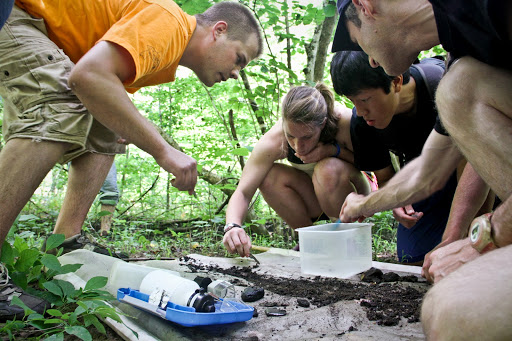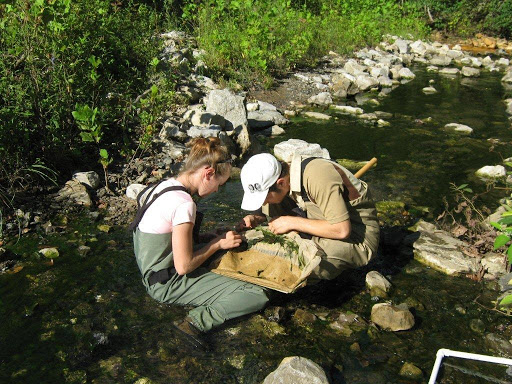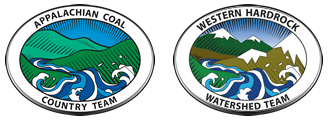Based on the work of
Upper Guyandotte Watershed Association
Southern West Virginia
Upper Guyandotte Watershed Association (UGWA) needed a volunteer base to aid in water monitoring efforts across the watershed’s large coverage area. To recruit these volunteers, UGWA partnered with several existing organizations— the local Trout Unlimited chapter, the Friends of the Earth Club at their local high school and visiting faith-based volunteer teams. UGWA makes the following recommendations to maintain success throughout the project: Partner with those most interested in being in the stream, be very clear about volunteer roles, assign someone to manage volunteers and paperwork (in their case, an OSM/VISTA), and work closely with any state agencies involved.

Tested by
Morris Creek Watershed Association
Southern West Virginia
Morris Creek Watershed Association (MCWA) needed consistent water quality data in order to repair the passive acid mine drainage treatment (AMD) systems located in the watershed. MCWA suspected that two of the four passive treatment systems were beginning to fail. They wanted to collect water quality data on a monthly basis to track the systems’ declining effectiveness. MCWA partnered with two colleges located within the watershed—West Virginia University Institute of Technology and Bridgemont Community College. They recruited students who were interested in water quality from both schools to become certified water monitors through the WV Department of Environmental Protection’s “Save Our Streams” program. By having the students trained and certified as water monitors, MCWA hoped to create a database of people with the knowledge and skills to conduct water monitoring and to keep that group up -to-date on local water quality. Other partnerships included: South Charleston High School Biology Club, WVU Tech Biology Club, Bridgemont Biology Department, WV Department of Natural Resources, and the Nature Conservancy. As the project continued, the volunteer pool began to expand and the outcomes MCWA expected were visible. The data collected by the volunteers allowed MCWA to see whether or not the local AMD treatment systems were operating effectively. The data collection conducted by these volunteers has helped obtain various funding opportunities for MCWA.
Tested by
Little Beaver Creek Land Foundation
Northeast Ohio
Little Beaver Creek Land Foundation (LBCLF) wanted to set up a volunteer-based water monitoring program. LBCLF staff performed water monitoring over the years, but had never developed a volunteer-driven monitoring program. The group felt that by creating a volunteer base to conduct monitoring, they would cover a larger area in a shorter amount of time. By teaming up with a local biology class, LBCLF was able to spend the majority of their time organizing on a group level by meeting with and training teachers in proper water monitoring methods. The teachers could then train their students, which saved time for LBCLF. In order for these classes to conduct water monitoring, LBCLF first had to procure the necessary equipment and supplies. They wrote and received a grant from the Ohio Environmental Education Fund to purchase water quality monitoring equipment for three classrooms to use.
The partnership between LBCLF and local high schools enabled the collection of useful water quality information at sites in the watershed that were not already being sampled while helping teachers show their students the environmental impact of poor water quality. Six sites were sampled over the course of the semester by 11 groups of students. Three teachers trained 78 students on the necessary skills to complete the water monitoring.

“If a group wants to implement a program of this nature, they need to have a set goal in mind and focus on what the data will provide for the group. Some areas might test for various types of chemicals where others may not even have that issue. One way of handling this situation is to develop a list of priorities you want to solve or address through this process and move forward with it.”
-Morris Creek Watershed Association
